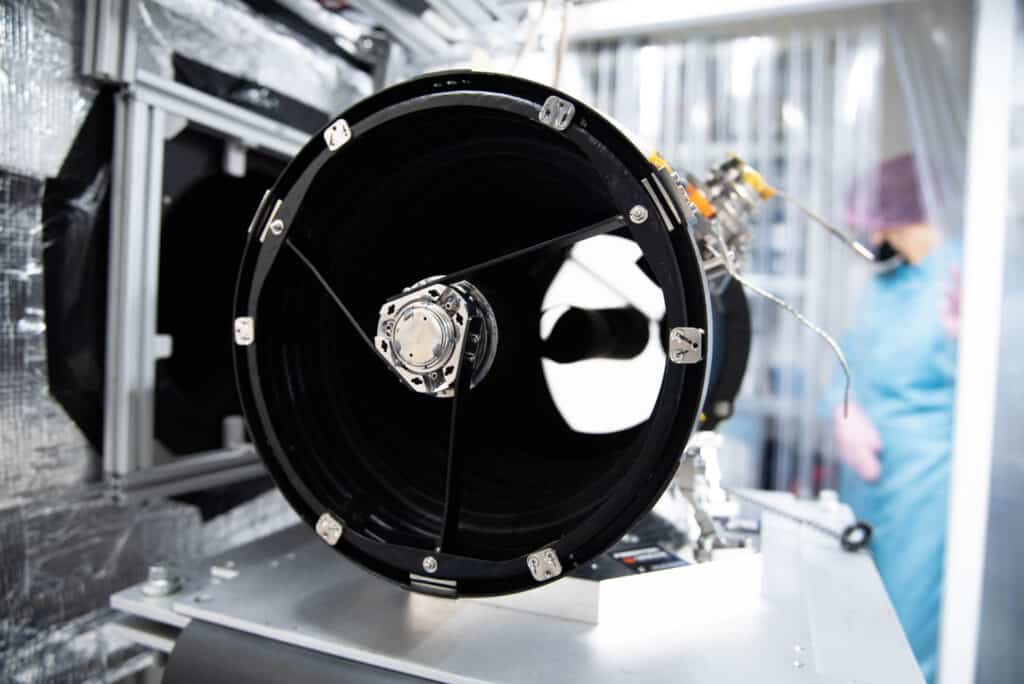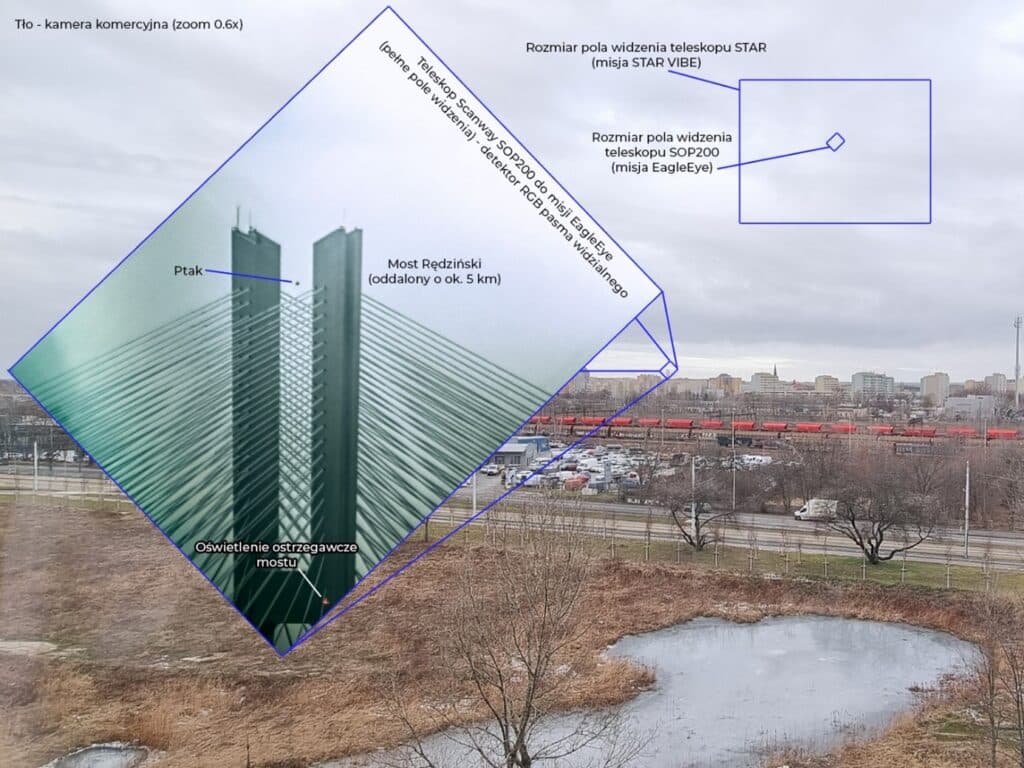EagleEye
mission updates
A few words about the mission
The EagleEye project has been ongoing since 2020 and aims to develop the largest Polish microsatellite for Earth observation. As part of the project, we are responsible for delivering an optical payload that is the largest fully designed and constructed Earth observation telescope in Poland (aperture near 200 mm). The instrument follows Space 4.0 guidelines and European Space Agency methodology. Ultimately, it will enable imaging in the visible (VIS) and near-infrared (NIR) bands with a resolution (GSD) of about 1 meter from the 350 km altitude. The satellite’s launch is scheduled for late H1/ early H2 2024 and will be one of the most important events in the history of the Polish space sector.
The EagleEye project is being carried out in a consortium with Creotech Instruments and the Space Research Center of the Polish Academy of Sciences, and is co-financed by NCBiR under the so-called Fast Track.
Mission updates
18/07/2023
Environmental testing of the EagleEye observation microsatellite (with the payload) to verify that the satellite meets the requirements necessary for launch and that it can withstand space conditions.
25/01/2024
The EagleEye telescope was delivered for integration into the satellite platform, and successfully passed functional tests!
This is one of the most important milestones of the EagleEye project, which is ongoing since 2020 and aims to develop the largest Polish microsatellite for Earth observation. As part of the project, we are responsible for delivering an optical payload that is the largest fully designed and constructed Earth observation telescope in Poland. The instrument follows Space 4.0 guidelines and European Space Agency methodology. Ultimately, it will enable imaging in the visible (VIS) and near-infrared (NIR) bands with a resolution (GSD) of about 1 meter. In 2023, the telescope successfully passed environmental tests at the Space Research Center headquarters.
The telescope provided by us will be integrated with the HyperSat satellite platform from our partner Creotech Instruments. Once this process is complete, the entire satellite will undergo functional and environmental tests. A positive test result will enable the satellite to be sent to Exolaunch for integrating EagleEye with the Falcon 9 rocket from SpaceX. The satellite’s launch is scheduled for late H1/ early H2 2024, the final date will be determined by the availability of launch windows from SpaceX. The launch of the EagleEye satellite will be one of the most important events in the history of the Polish space sector.

23/02/2024
We’ve recently performed ground tests of the telescope, which, according to our methodology, showed that the imaging resolution is in line with the design objectives. The next imaging of real objects, taken from a long distance, is likely to come straight from orbit. The launch of the satellite and the start of the mission are scheduled for this year.
Due to the size of the SOP200 telescope, which precludes balloon or airborne tests, Scanway conducted laboratory and ground tests of the instrument’s imaging capabilities. First, imaging was performed on artificial targets generated by the device, called a collimator. The images thus acquired provide valuable information on the field of view, resolution and quality of the optical instrument. A session of imaging the panorama of Wroclaw visible from the Company’s headquarters was also conducted.

The image obtained by the SOP200 instrument shows the Redzinski Bridge, located about 5 km from the telescope site. The instrument’s sensors capture images at 4K resolution, which, given the known size of the bridge, translates into a resolution of about 0.7 angular seconds per pixel. This means that the image resolution is in line with the mission, and for an orbit of about 300–350 km (at the end of the EagleEye satellite’s mission), we can expect images with a resolution of up to 1 m/pixel.
On the image, clearly distinguishable are the elements of the bridge’s antennas and lightning arrestors, which are objects of small (a few cm) cross-sectional size. The ability to detect such small objects translates into high remote sensing capabilities for on-orbit use. The images of the Redzinski Bridge were recorded in typical winter atmospheric conditions (without clear skies, with not the best air quality), at twilight and through the additional protective glass of the telescope, prepared for satellite integration. So the imaging may be of even better quality once the telescope is in orbit around the Earth, assuming full mission success.

